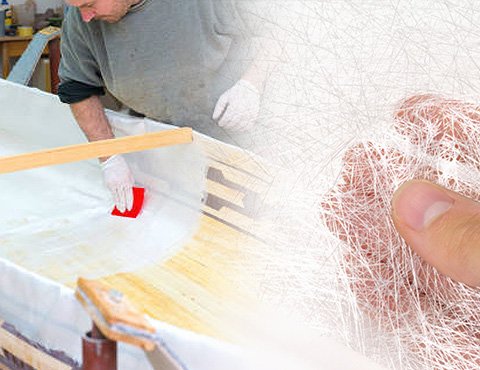
When making fiberglass products, the amount of resin and the ratio of fiberglass mat are crucial factors, which directly affect the quality and performance of the product. For the process of using fiberglass mats chopped into segments, we need to carefully control the amount of resin and the proportion of fiberglass mats. In this blog post, we will delve into how to accurately control the relationship between the two to ensure the stability and excellent performance of the product.
This is a critical issue because the amount of resin directly affects the quality and performance of the product. When preparing fiberglass chopped strand mat, you need to ensure that the amount of resin is sufficient to ensure that the fibers are fully infiltrated and form a strong structure. At the same time, excess resin may cause the product to be too heavy, affecting its performance. Therefore, to determine the exact amount of resin to use, several factors need to be considered:
Different types and specifications of 1.5 oz fiberglass mat have different resin absorption rates. Understanding the characteristics of the felt being used is the first step in determining the amount of resin to use.
The size and shape of the product directly affects the diffusion and infiltration of resin. Larger pieces may require more resin to ensure the entire structure is adequately covered.
Different application scenarios may have different requirements for the performance of the product. Depending on the end use of the article, the amount of resin needs to be adjusted to meet the appropriate performance standards.
When using 450g fibreglass matting, special attention needs to be paid to its absorbent properties to ensure that the resin can penetrate evenly throughout the structure. By carefully considering these factors, the right amount of resin can be formulated for a specific part, ensuring the desired quality and performance of the final part.
The ratio of resin to fiberglass mat is often one of the most critical factors in the fiberglass composite (FRP) manufacturing process. Determining this ratio involves many aspects, including required performance, application environment, and final product specifications. Here is a detailed discussion of resin to fiberglass mat ratios:
Overall, the ratio of resin to fiberglass mat is a complex and important decision that requires consideration of project requirements, performance needs, and the design specifications of the final product. Through careful analysis and experimentation, the proportions most suitable for a specific application can be found, ensuring the manufacture of high-quality, compliant fiberglass composite products.
The use of epoxy resin in the preparation of fiberglass chopped strand mat is often an effective and highly effective option. Epoxy resins stand out for their excellent properties in bonding with fiberglass. Its advantages include strong adhesion and good adaptability to the environment, making it the first choice in many applications.
Epoxy resin creates strong and durable connections during the bonding process. This connection is critical to ensuring the structural stability and overall strength of the chopped strand mat 225. Due to the chemical properties of epoxy resin, it effectively penetrates into the fibers, forming an even and strong bond that provides superior support and durability.
However, before using epoxy, it is important to conduct adequate testing to ensure it is suitable for the specific application. This includes taking into account the environment in which the product will be used, the required mechanical properties and other specific requirements. Through testing, the compatibility of the epoxy with the fiberglass mat can be verified and the amount of resin used can be adjusted to ensure optimal performance and adhesion.
Overall, using epoxy over fiberglass mats is a solid option, but in real-world applications, moderate testing and adjustments are always recommended to ensure the best results. At Niumaterial, we are committed to providing our customers with high-quality products, ensuring that the selected resin combined with the fiberglass mat performs exceptionally well to meet the needs of a variety of applications.
Resins that are incompatible with chopped fiber mats primarily include resins that do not bond well with fiberglass. The following are types of resins that may not be suitable for use with chopped fiber mats:
Some specific types of polyester resin may be incompatible with chopped fiber mats, resulting in poor adhesion or performance issues. When choosing a polyester resin, it’s a good idea to check the manufacturer’s recommendations to ensure compatibility.
Phenolic resins are commonly used in high-temperature applications, but they may be incompatible with chopped fiber mats, causing adhesion issues. When using in high temperature environments, careful selection is required.
In most cases, epoxy resins are compatible with chopped fiber mats, but some special types of epoxy resins may have adhesion issues. When choosing, it’s best to check the manufacturer’s recommendations.
When selecting resin, different brands and models of resin may have different properties and characteristics, so it is important to choose carefully based on the requirements of your specific project. In addition, small-scale testing can be performed to ensure that the selected resin will perform well in real-world applications.
Coating resin on fiberglass mat is one of the key steps in making fiberglass composites. Here are the general steps for applying resin to fiberglass mat:
Before applying, make sure the work area is clean and tidy. Have the necessary tools and safety equipment available, such as gloves and respirators.
Cut the chopped strand matt to the desired size and shape. Make sure the felt lays flat on the work surface with no wrinkles or folds.
Mix resin and hardener in the correct proportions according to the instructions provided by the manufacturer. Make sure to mix evenly to ensure the resin is fully cured.
Use an appropriate coating tool such as a brush, roller or spray gun to evenly apply the mixed resin on the surface of the continuous filament mat. Make sure the resin fully saturates the felt so it absorbs the resin and forms a uniform composite.
If added thickness or strength is required, multiple layers of fiberglass chopped strand mat can be stacked, with a layer of resin between each layer. Make sure there is a tight bond between the layers, avoiding air bubbles and uncured areas.
Removal of air bubbles: During the resin coating process, special attention should be paid to the elimination of air bubbles. You can use a roller or brush to gently roll on the resin surface to help eliminate air bubbles.
Depending on the type of resin used and environmental conditions, wait for the resin to fully cure. This may take a while, depending on the nature of the resin and temperature.
After curing, the finished composite material undergoes necessary post-processing, such as trimming, sanding and painting, to meet the requirements of the final product.
Throughout the coating process, be sure to follow the specifications and recommendations provided by the resin manufacturer. Proper coating techniques are critical to ensuring the quality and performance of the final product. In addition, conducting small-scale pilot manufacturing is an effective way to ensure that the selected resin and coating technology are suitable for a specific application.
When preparing continuous strand mat, precise control of the amount and proportion of resin is the key to ensuring product quality. With a thorough understanding of the different types of fiberglass mats and the flexibility to adjust resin levels and ratios, you can achieve your product’s ideal performance. In this highly competitive market, Niumaterial always adheres to the customer-centric philosophy and is committed to providing excellent customer service and high-quality products to maintain a competitive advantage.
If you have any further questions or needs, please feel free to contact Niumaterial and we will be happy to provide you with support and assistance.

If you have any questions
Please contact us for free consultation and product quotation
Table of Contents Add a h
Table of Contents Add a h

